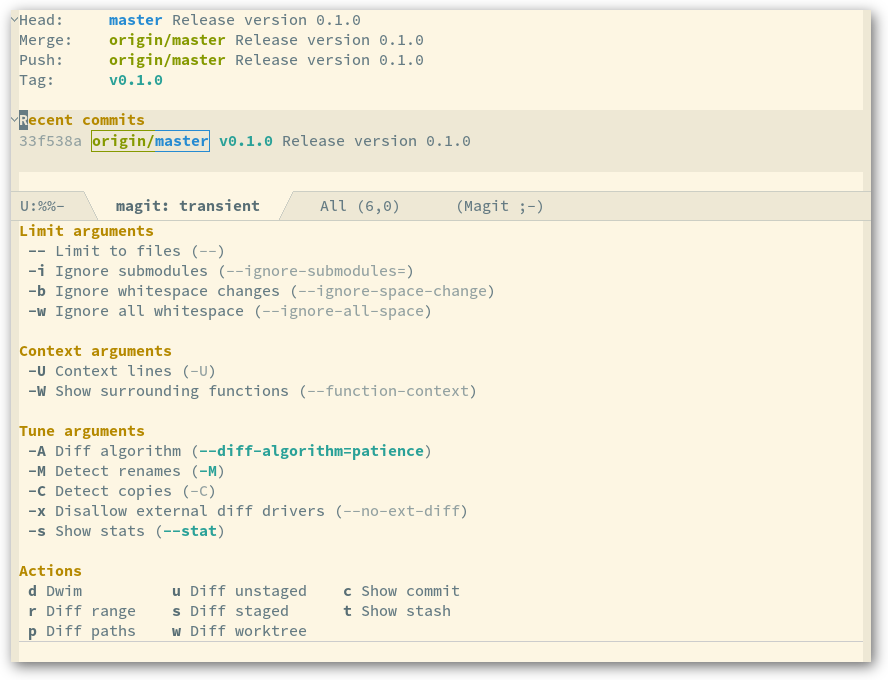Transient commands
Taking inspiration from prefix keys and prefix arguments, Transient implements a similar abstraction involving a prefix command, infix arguments and suffix commands. We could call this abstraction a “transient command”, but because it always involves at least two commands (a prefix and a suffix) we prefer to call it just a “transient”.
Transient keymaps are a feature provided by Emacs. Transients as implemented by this package involve the use of transient keymaps.
Emacs provides a feature that it calls “prefix commands”. When we talk about “prefix commands” in Transient’s documentation, then we mean our own kind of “prefix commands”, unless specified otherwise. To avoid ambiguity we sometimes use the terms “transient prefix command” for our kind and “regular prefix command” for Emacs’ kind.
When the user calls a transient prefix command, then a transient
(temporary) keymap is activated, which binds the transient’s infix and
suffix commands, and functions that control the transient state are
added to pre-command-hook and post-command-hook. The available
suffix and infix commands and their state are shown in a popup buffer
until the transient is exited by invoking a suffix command.
Calling an infix command causes its value to be changed. How that is done depends on the type of the infix command. The simplest case is an infix command that represents a command-line argument that does not take a value. Invoking such an infix command causes the switch to be toggled on or off. More complex infix commands may read a value from the user, using the minibuffer.
Calling a suffix command usually causes the transient to be exited; the transient keymaps and hook functions are removed, the popup buffer no longer shows information about the (no longer bound) suffix commands, the values of some public global variables are set, while some internal global variables are unset, and finally the command is actually called. Suffix commands can also be configured to not exit the transient.
A suffix command can, but does not have to, use the infix arguments in
much the same way it can choose to use or ignore the prefix arguments.
For a suffix command that was invoked from a transient the variable
transient-current-suffixes and the function transient-args serve about
the same purpose as the variables prefix-arg and current-prefix-arg do
for any command that was called after the prefix arguments have been
set using a command such as universal-argument.
